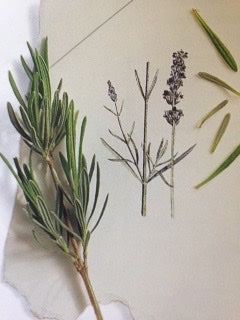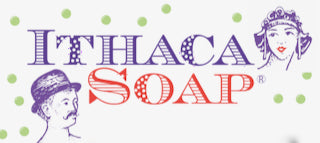


What is an essential oil?
Life Essence
Essential oils are natural perfumes distilled from plants. There are approximately 3500 different plants around the world that exude a perfume, while only about 150 have the special sac where the essence is stored. This "oil" is not an oil in the traditional sense of a grease. The natural aroma is the plant’s life force; its essence.

How are essential oils made?
Essential Oils and Their Uses
The essential oil that is stored in these special sacs can be extracted using a variety of methods. Distillation (steam or chemical), enfleurage (oil method), cold process extraction are a few methods used to capture this life force.
Once extracted and captured, essential oils can be added to oil, water, or alcohol based products. Oil based products include natural soaps, lip balms, lotions, and shampoos.
With knowledge and guidance, you can drink some essential oils when properly diluted in alcohol based products. Or wear them on your skin in partially natural and all natural perfumes. Essential oils were medicines in the ancient world.
Totally synthetic fragrances in personal care and household products are a different product altogether and can be very harmful.

Essential Oils and their benefits
Aromatherapy
Essential Oils Are The Meaning of Mother Nature
Essential Oils: Natural aromatics are Mother Nature's gifts of magic, beauty, medicine, flavor, and life enhancements from plants. These special scents are what give herbs and spices their specific flavors and characteristics. Essential oils give flowers and fruit their perfumes.
Aromatherapy oils and their uses, are as simple as using good, natural soap to wash the dishes and smelling the essential oil. Lavender is known to be relaxing.
You can take the mundane task of hand washing dishes with lavender dish soap. By breathing in the essence of lavender, your day becomes more calm and relaxed. Plus you did a house cleaning chore at the same time!

Can you consume essential oils?
Can you eat essential oils?
Think about when you peel an orange and the bitter juice squirts out of the peel. That's an essential oil squirting out of the pockets.
In the case of an orange, the actual fruit is made up of juice pockets, which contain tiny amounts of another essential oil. So yes, you can eat some essential oil.s Many essential oils are not for eating. Do your research.
These glandular cells that contain the essential oil are volatile, meaning it can easily evaporate, perfuming the air.
Oranges yield many different essential oils: Bitter Orange, Sweet Orange, Orange Blossom (Neroli), Orange Flower, Manderin, Petigrain,
Limonene, an essential oil from citrus rind, which is that irritating squirt you get when peeling a citrus fruit. This is a known skin irritant frequently found in lip balms. This is why you feel a "cooling" effect with many lip balm applications. It is actually dehydrating your lips, causing you to use more lip balm more frequently.
For non irritating, limonene free lip balm, click here.

Do aromatherapy oils work?
The answer is...
This is the familiar garden Mother's Day flower, daffodil. Native to the Middle East and the Mediterranean, it has been naturalized in Southern France. It is cultivated mostly for its flowers. Narscissus oil is distilled from the flower bulbs.
The flowers grow everywhere and are a signature aroma and bouquet for Mother's Day.
Do aromatherapy oils work? If the aroma from a natural flower makes you feel good, then the answer is yes!

Beware of synthetic smells
Lilac
Lilac perfume-enjoy the moment. It's fleeting
Lilacs are a wonderfully perfume-y bush that blooms in mid Spring. The bush size ranges from a sprig to a 12 foot tall 10 foot diameter bush with multiple trunks and branches.
The flowers come in white, light purple, medium purple, purple, dark purple, blue, light pink, magenta, dark magenta, and white with any of these colors as a blush.
Each flowering branch is comprised of many small florets that form a cone going up the branch. One flowering branch can perfume a whole house, with it's natural fragrance wafting through the air. Lilac perfume is very intoxicating and captivates the senses.
Lilac does not have an essential oil sac, so the perfume is always in the moment. It is not possible to capture this perfume, due to the lack of essential oil pockets. Any lilac aroma in any personal care product, perfume, candle, etc is either a natural copy or synthetic. It is never authentic lilac.

essential oils are good for skin
Essential Oils in Soap
Peppermint is a common herb, that is easily grown in a variety of climates, and soil types. If not regularly harvested, it will take over a garden bed and spread.
The much loved Lavender comes in many varieties, 3 of which are grown specifically for their essential oils. Lavender is an essential part of your natural 1st aid kit.
Patchouli (usually potted in the West) gained popularity as the aroma of the 1960's. Patchouli came to America through the import of cotton garments from India, since it is an excellent moth repellant. It is widely used for a variety of other purposes, as well. In my experience, is either loved or despised. There is not much emotional tolerance in the middle ground for this perfume.
Most associated with the cuisines of India and it's neighbors, lemongrass is a tall tough grass, with a citrus association in the West.
Rosemary, a common culinary herb, comes from many countries, each one a little bit different.

Make a 1st aid kit
Natural remedies work best
I always have a 1st aid kit on hand, even if it's just the one in the bathroom closet. It contains:
- a bar of soap-I prefer Unscented, but any of our scents will do
- Instant Liquid Soap
- a few LiXTiK Lip Balms: Lavender, Peppermint, and Clove Spice
- adhesive bandage strips
- cotton swabs
- cotton bandages
- tweezers
- a tourniquet - it's like a giant rubber band and I've never used it.
- tiny flashlight
- a small glass jar of plain clean water
- Lavender Essential Oil

Essential oils from trees
Tea Tree Essential Oil and others
Cinnamon, most commonly known in the West, as a pie and cookie spice.
Amber is a black, tar like resin, tapped from trees. When dried, it is dark, golden brown, with a sweet aroma.
Our apple perfume, in Apple LiXTiK Lip Balm is a custom blend of essential oils and apple essences.
There are over 700 different species of eucalyptus, of which at least 500 produce some sort of essential oil. Our choice is in the perfume class.
The uses of tea tree are based on a very long oral history from the aboriginal people of Australia.
Fir is native to the US West coast. We call it by its generic name, pine in our Pine Forest bar soap.
When you think of clove, it's usually related to cuisines or toothaches. In addition to those uses, clove bud also makes a lovely and functional perfume. Clove Spice bar soap
One of my favorite fruits, grapefruit are native to a few countries in the world, but the essential oil is mainly produced in California, USA.
